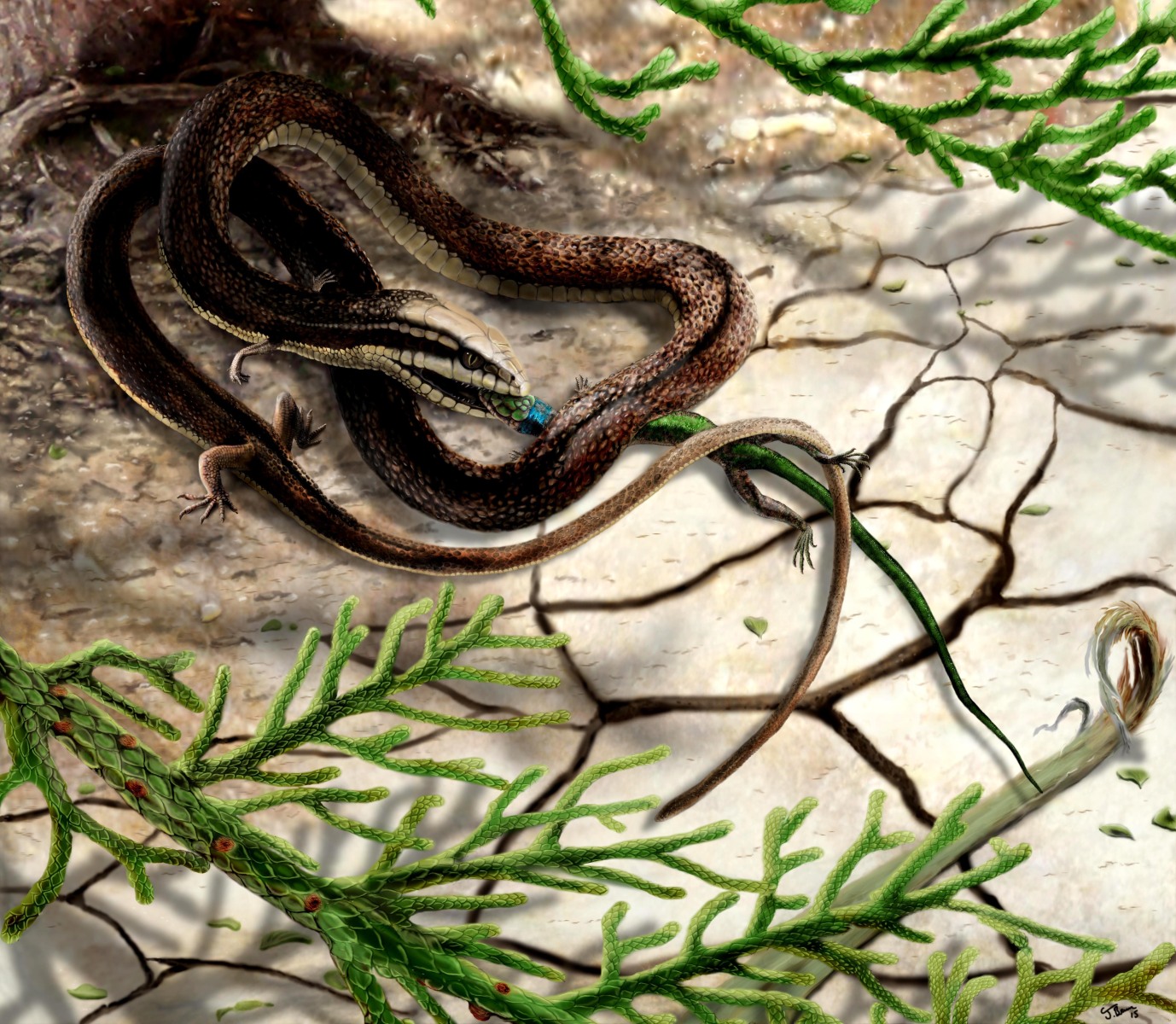A fossil snake unlike any other has been discovered - and it has 4 legs! This specimin may be able to settle some arguments about the evolution of snakes, as Ginny Smith  explains to Chris Smith...
explains to Chris Smith...
Ginny - I've got a really interesting story about an ancient fossil snake that's been discovered. Now, it hasn't been discovered the way that a lot of fossils are by someone out in the wilderness hunting for fossils. David Martill was actually on a field trip with his students to a museum and looking at the fossils in that museum in Germany and he spotted something really interesting. It looks exactly like a snake. It's very small. It's only about 15 centimetres long. But when he looked at it, he saw that it had legs. Now, that's interesting because snakes done normally have legs. There have been some examples found of snakes that have hind legs, just two at the back.
Chris - I think pythons have that don't they? A little pair of vestigial legs.
Ginny - Yes. They've got tiny little vestigial ones, but this one actually has four legs and a snake with four legs has never been seen before in the fossil record. So, he knew that they were on to something particularly interesting here. He's arguing that this definitely is a snake.
There is some debate here. So, we know that snakes evolved from lizards. So, they once had legs and then they lost them. They think it's a snake because it has scales like a snake and they even found in its stomach some little tiny bones which shows that it was eating other vertebrates. And of course, most snakes nowadays, I think possibly all snakes eat other animals. They are predatory. Not all experts are agreeing that this was a true snake because there are legless lizards - lizards that have lost their legs but aren't snakes. So there's still a little bit of debate here. But if it is a snake, which some people are saying it is, it would tell us something that we didn't know about how evolution happened because there's been a lot of argument about whether snakes evolved from lizards that swam or lizards that burrowed because in both of those examples, you can lose your legs and still get around perfectly well. This one supports the burrowing hypothesis.
This fossil doesn't have any adaptations that will make it a good swimmer, but it has a really kind of pointy noise that would've made it a good burrower. So, that shows support for that hypothesis. The other interesting thing is that their legs don't appear to be useful for walking or even sort of dragging yourself around and crawling. But they aren't completely useless. They aren't vestigial like the ones you mentioned on the living snakes that we see sometimes.
They have become kind of highly specialised and they think that they might actually have used it to hold on to their prey because they've got this really long fingers and possibly even hold on to each other when they were mating as well. But it does look like they've stopped being useful for one thing and they've evolved to be useful for something else which is really interesting. That's given rise to the snake's name which I think is great. It's called tetrapodophis amplectus which roughly translated means the four-legged hugging snake.










Comments
Add a comment